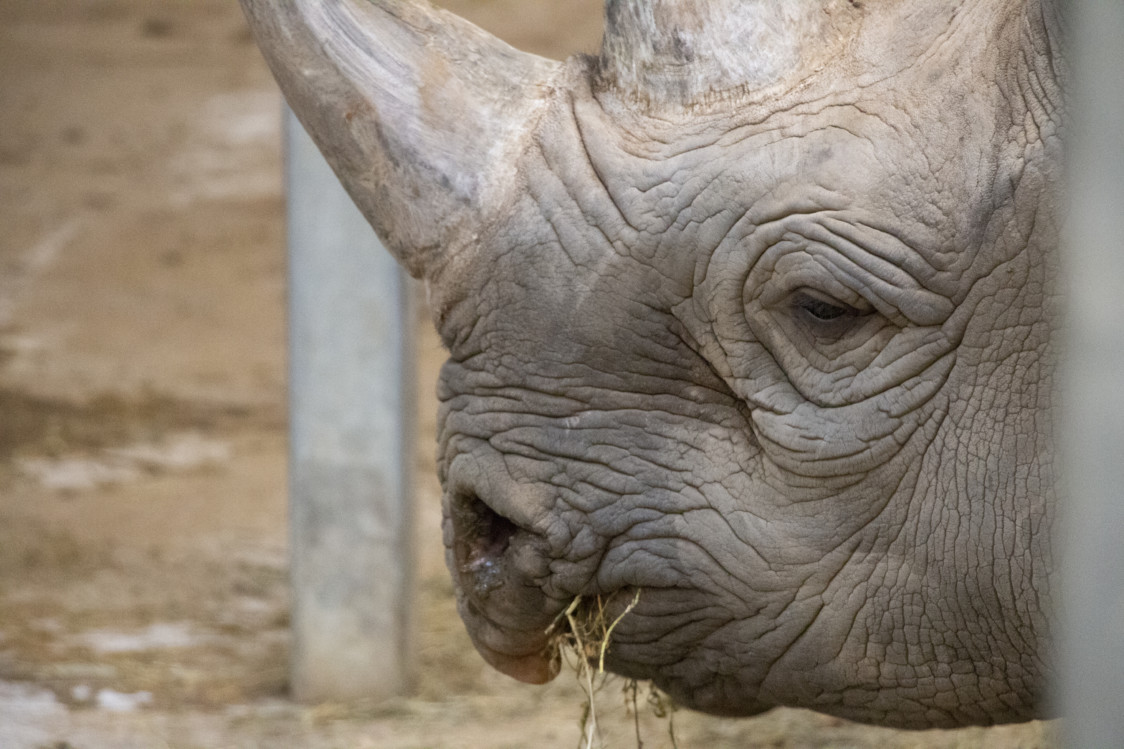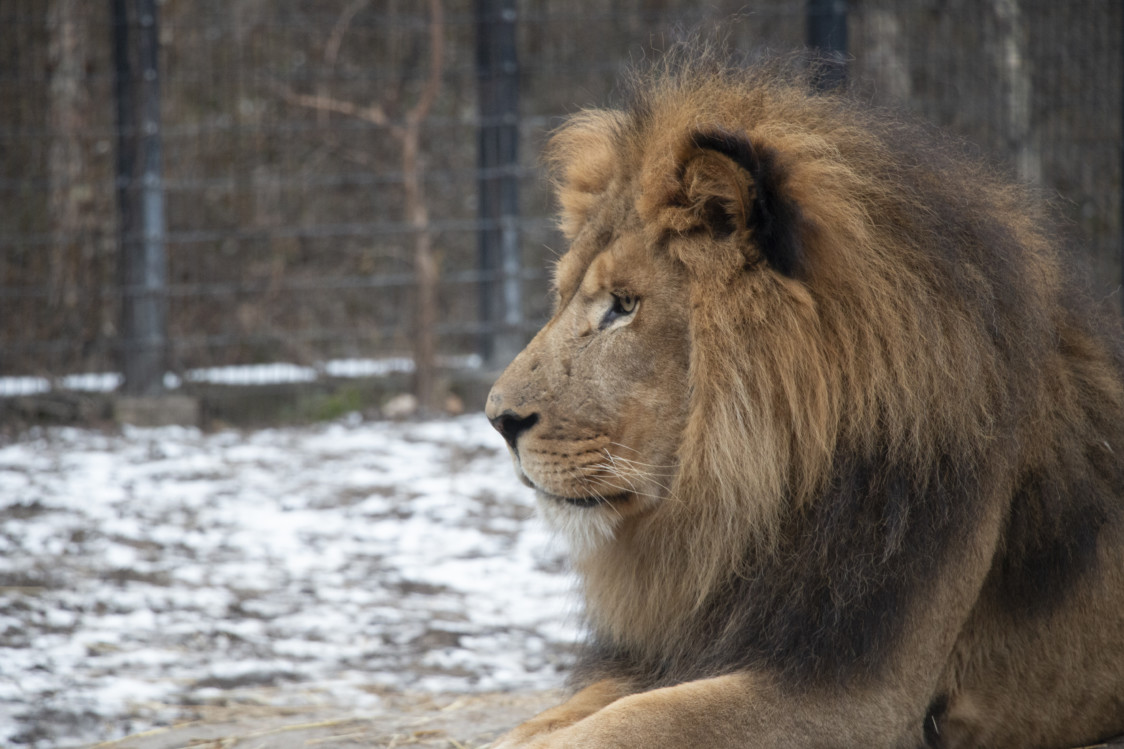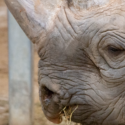Elephants hate the cold. They’re physically huge creatures. They demand lots of space. They like to keep in packs. That’s why you won’t find any at Des Moines’ Blank Park Zoo.
“Right away, we noticed that elephants need warm weather,” says Ryan Bickel, Blank Park Zoo’s chief marketing officer. “When you have an elephant that needs to live in a family group that needs a large area … then they would need that space indoors.”
It’s hard to imagine that zoos have a life beyond summer, but Blank Park Zoo remains open year-round. Still, not many people think of the zoo as a cold-weather attraction. It’s not uncommon to walk through the zoo on a brisk day in November with the park entirely to yourself — well, you and the animals that can handle the weather. One unsurprising winter lover: the Siberian or Amur tiger.
“This (weather) is his habitat this time of year,” Bickell says. “And when there’s snow on the ground, he looks like he’s in his natural habitat … he’s always going to be active.”
Blank Park Zoo’s attractions change throughout the year to accommodate a variety of biological preferences. While some, like the Siberian tiger, take the weather in stride, other animals must be moved indoors. Many are given the choice of whether they’d like to spend time indoors or out, though if they stay indoors, zoo-goers often don’t get a chance to spot the animals. The zoo’s black rhino family, like the aforementioned elephants, have no desire to frolic in the snow. Their eastern African heritage leaves the three-member herd dangerously exposed during the colder months. With this in mind, Blank Park Zoo constructed an 3500-square-foot indoor facility where father Kion, mother Ayanna, and baby Tumani can live in relative comfort. It also gives visitors a chance to watch the rhinos being fed.

But Iowa’s winter climate is downright balmy compared to its neighbors to the north. Bismarck, North Dakota’s Dakota Zoo stays open through the winter as well — even if that means its zookeepers’ morning commute involves a snowmobile.
“It’s definitely not easy, zookeeping in the wintertime, especially here,” says Julie Tedrow, zookeeper at Dakota Zoo. “One of the biggest issues is that (drinking) waters freeze, because when it’s 30 degrees below zero, they freeze really quickly.”
A big portion of Tedrow’s job in the winter, when she’s not interacting with the animals, is shoveling snow. Despite the heavy snowfalls North Dakota is known for recieving, the zoo stays open, though with limited winter hours. Tedrow says that while attendance noticeably drops during these months, you’d be surprised at how many people still come to visit.
“Our zoo in particular is really nice to use, to walk around,” Tedrow says. “People love getting out and walking around on nicer days during the weekends. We also have a playground at our zoo that kids come to visit any time of year.”
Still, the Dakota Zoo is mainly limited to the heartier animals that can stand the cold. Rather than African mammals, it’s stocked with grizzly bears, arctic foxes, and coyotes. Zookeepers switch up the animals’ diets, too, to provide them with a little extra warmth. They’re fed food richer in oil and fat. Some are even fed peanuts — a healthy source of fat for humans that translates to animals, too.
“You’ll keep their diets up so that they have a nice blubber layer to keep them warm,” Tedrow says.

The threat of cold spells demands constant vigilance. One zookeeper at Blank Park Zoo says that Amur tigers can safely spend time outside until the weather hits around -10 degrees. Like in North Dakota, frozen drinking water is a large concern. A tiger stuck outside all day without water is anything but ideal.
Unfortunately, not all zoos take pride in caring for their residents. Debbie Metzler, the supervising captive wildlife specialist for PETA, has seen those organizations firsthand. Last November, Cricket Hollow Zoo, a roadside attraction in Manchester, Iowa, faced fines from the USDA after leaving three piglets outside in suboptimal temperatures. As a result of the harsh weather, the piglets died.
“Their long history of animal welfare violations just really proved that animals will continue to be in danger so long as the facility remains open,” Metzler says.
Unaccredited attractions like Cricket Hollow or Michigan’s Summer Wind Farms, which was cited for over 200 animal welfare violations in just three years, pose risks to animals that accredited locations like Blank Park Zoo and the Dakota Zoo do not. Without passing a rigorous approval process through the Association of Zoos and Animals, Cricket Hollow and its ilk aren’t compelled to provide their animals with a particularly high standard of living.
But for the 10 percent of animal exhibitors that are accredited, winter life for these animals remains a comfortable, if somewhat chilly, few months. Some, like the tigers, even find themselves enjoying the colder conditions. Just don’t expect to see any elephants.

